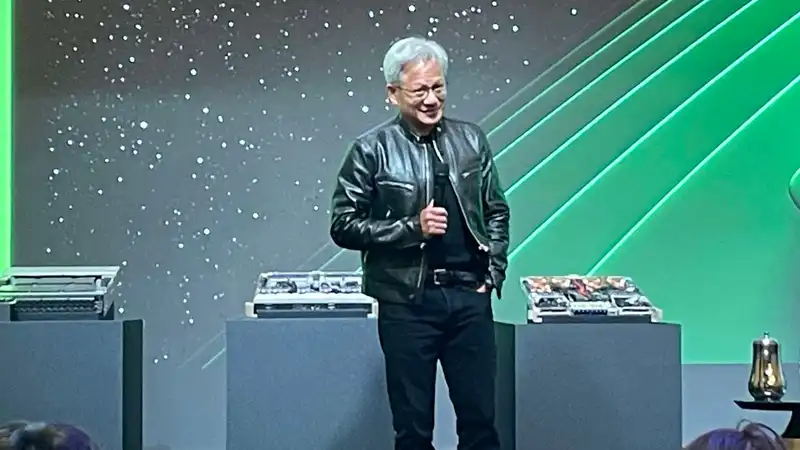In a Q&A session at this year's Computex event, Nvidia CEO Jen-Hsun Huang was asked if it would use AI to directly generate graphics for games and support traditional rasterization methods. After pointing out that neural graphics are already in use, Huang said that through frame generation and so on, AI will inject games and PCs to create high-resolution objects, textures and characters.
"We are already using the idea of neural graphics," Jen-Hsun Huang said in a Q&a session. "We can achieve very high-quality ray tracing, half-tracing 100% of the time and achieve excellent performance. It also generates frames between frames, not interpolation and not frame generation. Not only that, it generates pixels and also frames."
Most PC gamers, especially those who have nvidia graphics cards on their rigs, know that AI is currently being leveraged in their games via DLSS. For DLSS super-resolution, upscaling is not done by AI. This is handled by a normal shader routine, but the resulting image is scanned and corrected by a neural network.
In the case of DLSS frame generation, 2 previously rendered images are fed to different neural networks along with other information from the rendering pipeline. It is trained on how motion affects the image, and the result is a completely new frame that is inserted between the other two frames.
The texture is also a 2D grid of pixels, so it does not have to be a finished frame that can be upscaled or generated in this way. In theory, any array of data can be processed by AI to improve it, resulting in higher resolution. And that's exactly what Huang was referring to — take the meshes and textures low in detail and use AI to create a better version of them.
Huang agreed, saying, "The future is going to produce textures, produce objects, and make objects have lower resolution."The texture is of low quality and can produce high quality. It can also be compressed. So we're going to get a richer and richer game in the future.
Doing so requires less VRAM to store all assets, less bandwidth to transfer them, and in short, allows developers to speed up the process of making games in the first place, allowing gamers to potentially get more performance. It will be.
The Nvidia CEO described a scenario where you log on to your favorite multiplayer game and play a few rounds with some friends. At the moment, many games drop bots into the slot if there are not enough people for the round, but anyone who played against the bots in Counter-Strike2 knows that their range is significantly limited. But if AI was taking on that role, if it acted like a human, it would not be able to tell the difference.
This is the future of the game that Jen-Hsun Huang envisioned: "In the game, all the characters are there. "Right" It's like that you get into a fight with six colleagues. And you know all those six colleagues, maybe two of them are real people. The other 4 are Ai and they can play with you for a long time. So they actually remember you."For some people, having everything generated by AI may be the same as being a very worrying or at least a "fake" game. But consider this: upscaling is often completely transparent and automatically glitches, strange, and very, on what is enabled by the average PC gamer, and it's just five years.
It's not hard to imagine that in another 5 years, game developers will have access to APIs that can generate high-resolution assets via GPUs. Everyone would complain about this if it simply just worked.
is an NPC with a different AI than a standard PC control bot. It's an AI-improved character model that's different from the improved mesh via tessellation and geometry shaders"using neural networks to constantly check your PC or game, how you play it, and tweak everything behind the scenes to keep everything in the best possible state." That is important.
Or, as Jen-Hsun Huang said, "AI is infused with every aspect of gaming and Pc."
We're far from the point where all the games are powered this way, so perhaps there's nothing to worry about remotely right now. But some might say that as the entire gaming PC ecosystem becomes dependent on AI, consumers will turn to hardware manufacturers who have the ability to do this best.
The graphics card is currently one of the most expensive parts of any gaming PC and the cost of the most powerful ones is very high, and if you have the best graphics or the best performance in the same game of money is only possible on the most AI-enabled graphics cards, the market is not that specific vendor.
Of course, this is already the case.Nvidia occupies a large part of the discrete GPU market and by driving the use of ray tracing, upscaling, and frame generation in games, that's the direction it's all gone, whether someone wanted it or not.
The gaming PC market has enough competition to control the price when a significant portion of the game is being generated by AI in real time, and I'd rather sit on the sidelines and watch what the future of graphics and gaming will be like. Such as
.

Comments